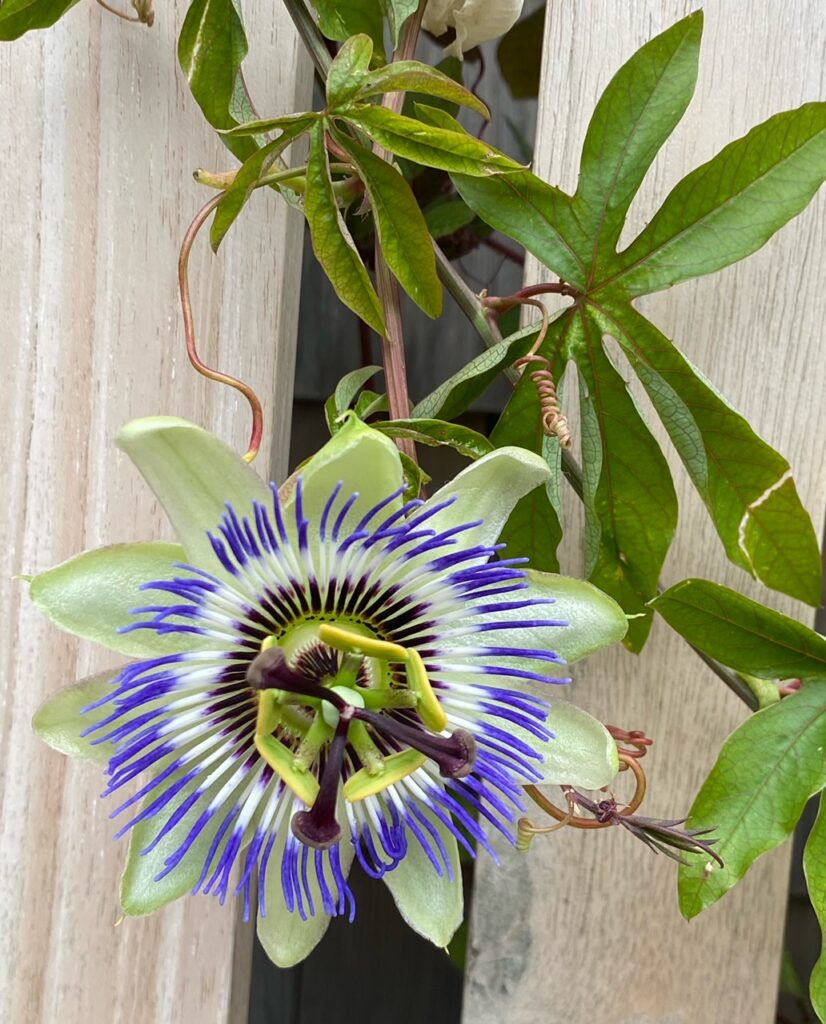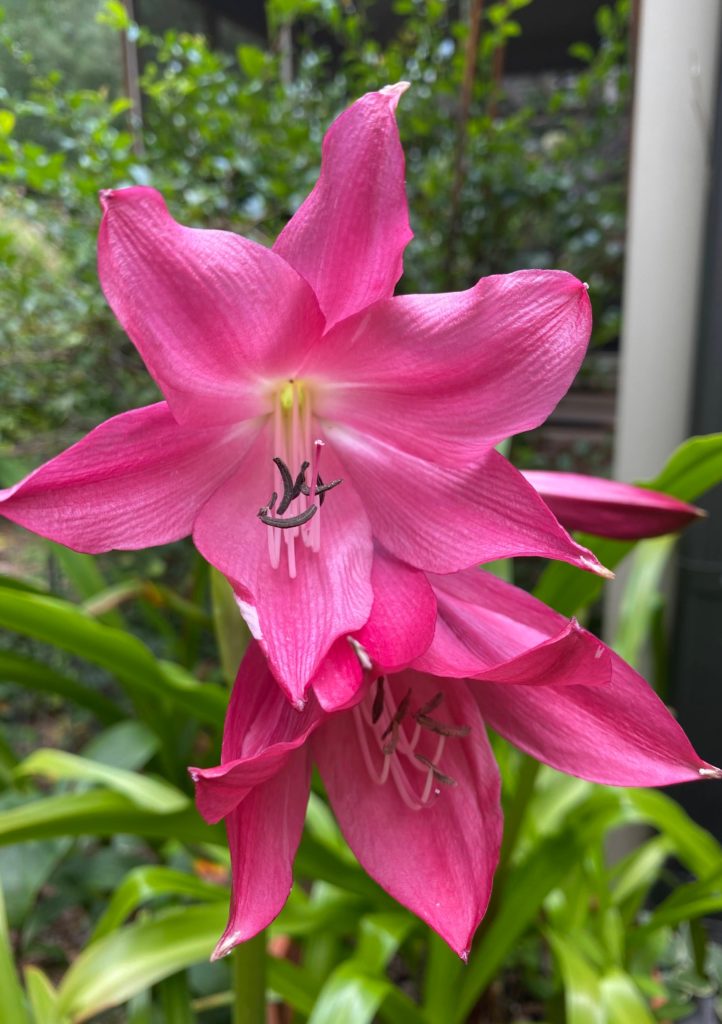
The weather is on my mind a lot these days. It seems that when I was new to gardening many years ago, you could count on rainfall during the cooler seasons of spring and fall, with dry spells sprinkled through the summer months. While there were certainly storms and droughts, our gardens coped pretty well with the Georgia weather.
Something has certainly changed in the last few years. I’ve lost more perennials and shrubs in the last two years than in any period I can recall. While I don’t worry about losing a few annuals here or there, since they are temporary plants purchased for the season, I do get upset when a $45 shrub kicks the bucket.
A few years back, we had a frigid cold snap, sandwiched between periods of very mild weather. I’ve sinced learned that these weather events can be deadly for some evergreens because they simply can’t cope with the dramatic shift in temperature within such a short period of time. I watched three large camellias slowly die that year, an expensive loss.
This summer we’ve had weeks of blistering heat without a drop of rain, followed strangely by weeks of daily rainfall and high humidity. This month, the dry weather has returned. No wonder our plants have whiplash. Garden plants can certainly cope with the ups and downs of weather, but will they thrive? Looking at my garden this week, clearly the answer is no, not always.

Like most gardens, mine has areas that retain water during rainy spells, and areas where water drains away quickly. I’ve learned what each area requires over the years, and have planned and then planted accordingly, but this year, that’s not working as well as it has in the past.
I pulled up a patch of ‘Sheffield Pink’ mums today, one of my most dependable perennials, which had root rot, probably from our long spell of wet weather earlier this summer. They were planted in a sunny bed that stays moist when we have heavy rain. Mums planted elsewhere are thriving.

At the other side of the spectrum, I’ve lost euphorbia planted in an area with very well-draining soil, where they have thrived for the last few years, perhaps because they baked for too many weeks in hot sun and just called it quits, despite my weekly rounds with the sprinkler.
I am beginning to believe that each year is going to be a gamble.
I worry that new gardeners will just give up when things don’t go as well as expected.
I wonder if the groups of plants I’ve always recommended in garden consultations will be as reliable as they have been in past years.

While weather is out of our control, there are a few things Southern gardeners can do to help give their plants the best chance of not only surviving, but thriving no matter what challenges the season may bring.
- If you have areas in your garden that stay damp after extended periods of rain, raise beds when possible. Even raising a border by four inches or so and edging it with attractive rock can make a big difference. When you amend soil, use bark products instead of compost. This will make the garden soil more open and less likely to absorb extra water. Use an expanded slate or shale product when preparing new beds, which will help with soil structure over the long term. I can’t recommend this product enough for anyone with sticky red clay soil. Mulch lightly in these damp areas, which may help them dry out more quickly when the soil has been drenched with rain.
- If you have the opposite issue with soil that dries out very quickly, use compost as a soil amendment to keep moisture in the soil. Be sure to add a three inch layer of mulch after planting to keep soil moisture from evaporating in hot, dry weather.
- Buy plants with a cold hardiness rating within your USDA zone. I am zone 8B, and on cold winter nights where temps are forecasted to fall below 20 degrees I have been covering a particular shrub that I own (a banana shrub or Michela figo) that does not tolerate temperatures below 15 degrees. Would I have purchased this shrub if I’d known how much time I would spend covering, uncovering, and worrying about this plant? Nope. I didn’t look at the plant tag, but instead saw the photo of the pretty white spring blooms and placed it in my cart. While I do love the banana scented blooms in spring, I’m not that fond of the extra work in winter.
- If you don’t have an irrigation system, and you aren’t fond of dragging hoses around, invest in a timer to attach to your hose bib and some drip tape or drip hose. This will allow you to get water to the roots of the plants that need it most without a lot of work on your part. I’m still a fan of the old-fashioned sprinklers and I turn them on very low in the morning and move them around in the garden where I need to water. This low tech method works for me, and the slow trickle of water is absorbed into the soil without it running off and being wasted.
- Read plant tags and then do some googling when you find a plant that you’re unfamiliar with at a plant store and you’re considering a purchase. If a particular plant needs consistent moisture, and should not be allowed to dry out, consider where you live and whether or not this is realistic. For me this sets off alarm bells. I know that even my damp beds will dry out in summer, so those types of plants don’t work for me in Georgia.
- Learn which plants do best in your area. This may mean asking fellow gardeners for their top picks or visiting your local botanical garden. Be patient with yourself. Gardening does require some experimentation and a little research now and then. Failures are a way to learn. I fail each and ever season, many, many times, because I grow a big assortment of plants, some that I’ve grown from seed and some I’ve purchased. Some things work and some things fail and I’m okay with that.

There are some bright spots in the garden even now, after this less than ideal summer season. A swath of carex ‘Everillo’ has been showing off to garden visitors since I moved it to a damp spot in my garden, having sulked as a groundcover under a coral bark maple I planted a few years ago. The sedums are beginning to show their autumn colors, and though the deer have sampled a few flower heads here and there, they are looking good. Some things are slowing down while others, like Japanese anemones and perennial mums are starting to bud, meaning there’s a lot of color ahead for September and October.
Hoping you’ll have a glorious fall season in your garden, wherever that may be.
